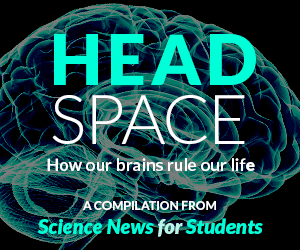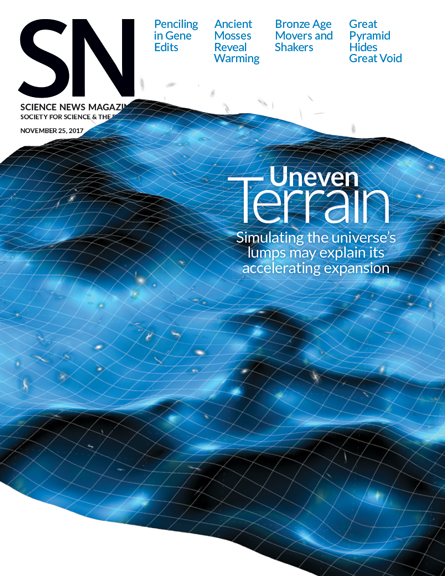

Some cosmologists hope to explain the universe’s accelerating expansion by fully accounting for the universe’s lumpiness, Emily Conover reported in “Simulating the universe using Einstein’s theory of gravity may solve cosmic puzzles” (SN: 11/25/17, p.
22).The universe’s accelerating expansion “is apparently based on the observation of objects that are moving away from Earth at speeds that increase as the distance to the object from Earth increases,” reader Tom Phillips wrote. “But the greater the distance from Earth, the farther back in time the object is being observed. This implies that the universe was expanding faster in the past than at present. What am I missing?”
Phillips isn’t alone in his confusion, Conover says. “We know that the universe is expanding thanks to the redshift of light from faraway sources. That light looks redder to us (meaning it has longer wavelengths) than it was when originally emitted,” she says. “In the case of the expanding universe, the redshift isn’t caused by the source moving away from us, but by space itself expanding.”
A new year brings new, notable anniversaries in science, math and medicine. In a Context blog post, “2018’s Top 10 science anniversaries” (SN Online: 1/5/18), Tom Siegfried recalls helium’s discovery 150 years ago, the 100th anniversary of the birth of physicist Richard Feynman (pictured) and more special occasions, “reminders of past achievements and context for appreciating science of the present day.
”That expansion stretches out light as it travels, giving the light a longer wavelength over time. The farther away a light source is, the longer the light must travel to reach Earth, which means that its light will be more redshifted. The reason…
The post Readers wonder about the universe’s expansion and more appeared first on FeedBox.